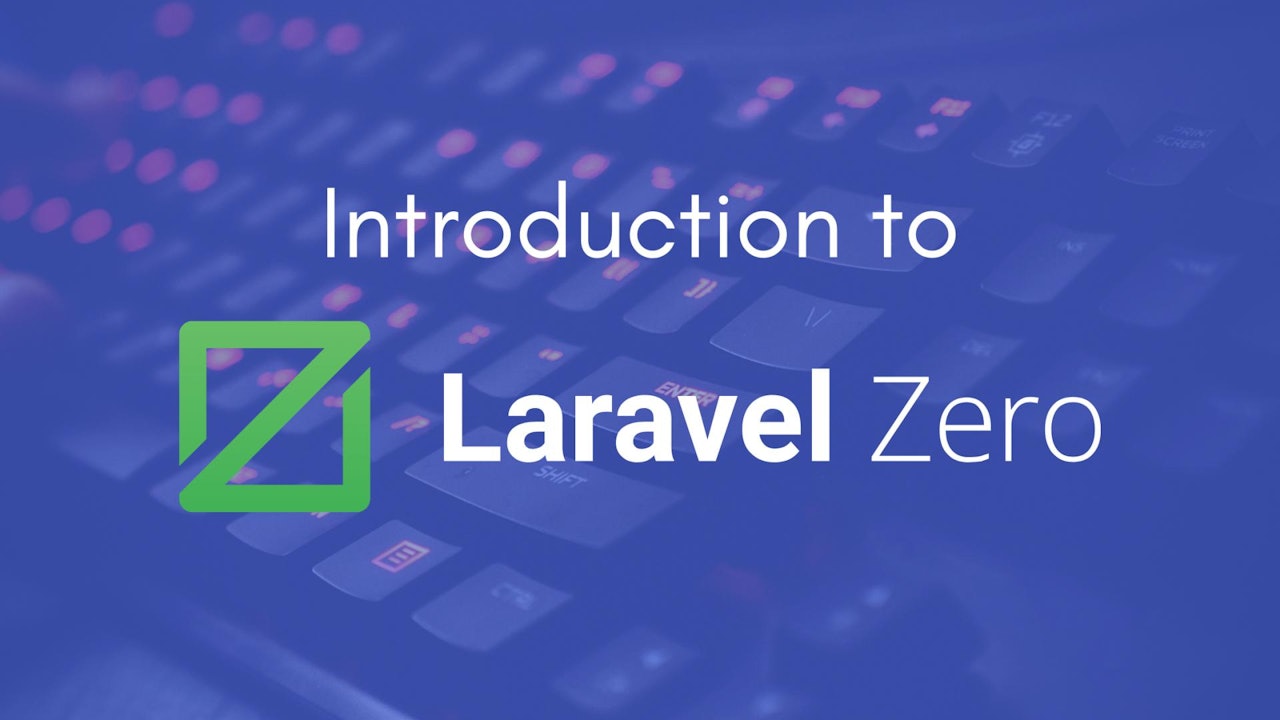Introduction
Laravel Zero is an open-source PHP framework that can be used for creating console applications.
Laravel Zero is not an official Laravel package but was created by Nuno Maduro, who is also a Software Engineer at Laravel, so I have no doubts about the code quality.
This tutorial, will give you a quick introduction on how to get started with Laravel Zero and built a simple Hello World command-line application.
Prerequisites
Before you get started, you would need to have PHP and composer installed.
I will be using an Ubuntu server on DigitalOcean for this demo. If you are new to DigitalOcean, you can use my referral link to get a free $100 credit so that you can spin up your own servers for free:
Once you have a DigitalOcean account, you can follow the steps here on how to install composer and PHP:
Installation
Before you start with the installation, make sure that you have the following PHP modules installed:
-
php-mbstring -
php-xml
To check if you have those installed already, you can just run this command:
 View Website
View Website
 View Website
View Website
 View Website
View Website
php -m
If you are following along and you've started an Ubuntu server, you can install the module with the following command:
sudo apt install php-mbstring php-xml
To create a new Laravel Zero project, you can run the following command:
composer create-project --prefer-dist laravel-zero/laravel-zero hello-world
Note: You can change the
hello-worldpart with the of your own name
Now instead of php artisan, you will need to run php application, for example:
php application
Output:
Application unreleased
USAGE: application <command> [options] [arguments]
inspiring Display an inspiring quote
test Run the application tests
app:build Build a single file executable
app:install Install optional components
app:rename Set the application name
make:command Create a new command
stub:publish Publish all stubs that are available for customization
If you want to, you could also change the name of your application by running the following command:
php application app:rename hell-world
This will rename the application executable to hello-world so from now on, instead of running php application you will need to run php hello-world:
php hello-world
Hello-world unreleased
USAGE: hello-world <command> [options] [arguments]
inspiring Display an inspiring quote
test Run the application tests
app:build Build a single file executable
app:install Install optional components
app:rename Set the application name
make:command Create a new command
stub:publish Publish all stubs that are available for customization
The content of the folder will look like this:
README.md
app
bootstrap
box.json
composer.json
composer.lock
config
hello-world
phpunit.xml.dist
tests
vendor
With that, we now have our Laravel Zero application ready. Next, let's dive into some of the available commands!
Commands
In order to create a new command, you can run the following:
php hello-world make:command HelloWorldCommand
The output that you will get will be:
Console command created successfully.
This will generate a new file at: app/Commands/HelloWorldCommand.php.
Open the file with your favourite text editor and change the following things:
- Change this with the name of the command that you want to have:
protected $signature = 'command:name';
- Change this with the description of your command:
protected $description = 'Command description';
- Inside the
handle()method you can add your logic, in our case we could just output a simple message:
public function handle()
{
echo 'Hello World';
}
If you've ever created a custom artisan command, you would probably find the process very similar.
Configuration
The configuration files for your Laravel Zero application are stored inside the config directory.
By default there are two files in there:
-
app.php: it contains some information for your application -
commands.php: you can configure the list with the default commands in that file
If you add a new file inside the config directory, it will be automatically registered. For example, let's add a file called hello.php:
touch config/hello.php
Then add the following content:
<?php
return [
'greeting' => 'Hello World!',
];
You will also be able to access it with config('hello.greeting'), as an example you can update the handle() method of your test command that you created in the last step to:
public function handle()
{
echo config('hello.greeting');
}
If you want to have the .env file back, you can install the Dotenv addon by running the following command:
php hello-world app:install dotenv
Next, we will go through some more of the available addons for Laravel Zero!
Addons
Out of the box Laravel Zero is quite stripped so you don't have any uncessacry code in your application, that way you can keep it as light as possible.
You can use the app:install command in order to include an addon.
To get a list of the available addons, just run:
php hello-world app:install
You will see the following output:
Laravel Zero - Component installer:
[console-dusk ] Console Dusk: Browser automation
[database ] Eloquent ORM: Database layer
[dotenv ] Dotenv: Loads environment variables from ".env"
[http ] Http: Manage web requests using a fluent HTTP client
[log ] Log: Robust logging services
[logo ] Logo: Display app name as ASCII logo
[menu ] Menu: Build beautiful CLI interactive menus
[queue ] Queues: Unified API across a variety of queue services
[schedule-list] Schedule List: List all scheduled commands.
[self-update ] Self-update: Allows to self-update a build application
You can use the interactive menu to choose an addon and install it!
In this post I will through a couple!
Database
In order to include the Laravel's Eloquent component, you need to run the following command:
php hello-world app:install database
Note: don't forget to change the
hello-worldpart with the name of your application.
In the background the app:install command uses composer, so the output that you would see will be quite familiar for you if you've ever used composer:
Installing database component...
Require package via composer: loading...
Do not run Composer as root/super user! See https://getcomposer.org/root for details
./composer.json has been updated
Loading composer repositories with package information
Updating dependencies (including require-dev)
Package operations: 1 install, 0 updates, 0 removals
- Installing illuminate/database (v8.8.0): Downloading (100%)
This will add a new config file for you at config/database.php where you can configure your database details. By default it uses SQLite so you don't need to make any changes unless you want to use a different SQL engine.
Once Database the addon has been installe, you can use it just as you would use Elequent in Laravel!
Usage:
php hello-world make:migration create_users_table
php hello-world migrate
use DB;
$users = DB::table('users')->get();
Logging
In order to install the Logging addon, you just need to run:
php <your-app-name> app:install log
This will include the Laravel logging service into your Laravel Zero project!
The usage is as follows:
use Log;
Log::emergency($message);
Log::alert($message);
Log::critical($message);
Log::error($message);
Log::warning($message);
Log::notice($message);
Log::info($message);
Log::debug($message);
Building the application
Once you are ready with building the application, you can run the following command to build a single file executable:
php hello-world app:build
This will ask you for your build version and it will generate a single executable inside the builds folder!
Conclusion
This is pretty much it! Now you know how to use Laravel Zero and build cool command-line applications!
For more information, make sure to checkout the official documentation here:
https://laravel-zero.com/docs/
If you like the project, make sure to star it on GitHub.
If you are working as a DevOps engineer, check out this DevOps Scorecard and evaluate your DevOps skills across 8 key areas and discover your strengths and growth opportunities




Comments (0)